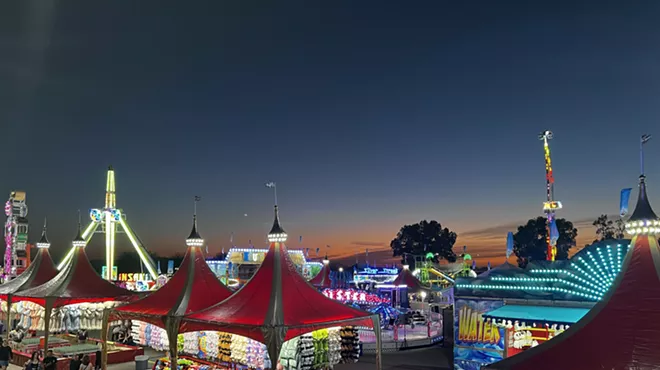Thursday, June 26, 2014
Word Odyssey: How the Amazon River Got Its Name—Part II
Unlike in later years, the lands bordering this stretch of the mighty river, down which Orellana and his men were headed, was densely populated, kingdoms made prosperous by elaborate techniques for farming turtles, manioc, maize, llamas, nuts, peppers, honey, pineapples, avocados, and other goods. In one region people harvested rubber and manufactured devices from it. In another, people specialized in producing vast quantities of pottery. The largest kingdom they encountered, the Omaguas, bordered three hundred miles along the river.
For the next few months, Orellana’s band—now down to fifty men—fought constant battles with thousands of warriors in flotillas of canoes, who were waiting in ambush as word of the odd, bearded white men preceded them downstream. As with the conquest of the Aztecs and Incas, the superior Spanish weaponry—steel swords, harquebuses, cross-bows and armor—enabled the relative handful of Spaniards to fight their way through vastly greater numbers of natives. The Spaniards would often land and fight through swarms of warriors in order to raid villages for food.
Past the confluence with the Rio Negro River, after a raid, villagers told the Spaniards that they were the tribute-paying subjects of a large empire consisting entirely of women. Then, on a raid near the confluence with the Madeira, Orellana’s band witnessed twelve tall arrow-shooting women, pale and nearly naked, with their hair braided around their heads, apparently acting as captains of the male warriors defending against the incursion. The women clubbed any warrior who tried to retreat. After eight of the women had been slain, all the defenders retreated.
Shortly thereafter, on June 25th, a captured trumpeter told them that his village was subject to a female empire, sun-worshippers who were ruled by Queen Conori. He reported that he had been to their villages, which were as close as seven days journey inland from his own, and could name seventy of them. The women were not married, but would raid to capture men to impregnate them. Baby boys were killed or sent to their fathers, while girls were raised as warriors. Their houses were made of stone, which was consistent with the impressive cities of white houses that the Spaniards had seen from a distance. The trumpeter described their appearance, clothing, adornments and temples in detail. They were considered a remarkable curiosity by the natives, for people traveled long distances to see this extraordinary queendom for themselves.
After their own encounters with the reputed queendom of all-women warriors (and although these women did not cut off a breast), Orellana’s band began calling the river the Amazon.
After another month of fighting and deprivation, the weakened Spaniards and their battered boats escaped the Amazon and set out to sea. By September 11, 1542, both boats had miraculously landed at a small pearl-fishing island occupied by the Spanish. Orellana made his way back to Spain, where King Charles V read Friar Carvajal’s account of the journey, including the Amazons, and officially gave the river the name Rio Amazonas.
And that’s how the most amazing river on Earth got its extraordinary name.
Epilogue
Did the “Amazon” queendom really exist? Some historians have found the claim too stupendous to credit, believing it to be a fanciful product of credulous conquistadors—conquistadors who also heartily believed in the mythic El Dorado that prompted the river adventure. Successful efforts to penetrate the Amazon, which could have confirmed the story, were a long time in coming. In conquistador style, Orellana attempted a follow-up mission to conquer and settle the Amazon basin, but he failed ignominiously—with Orellana in the end, dead. In 1620, English-Irish explorer Bernard O’Brien traveled several hundred miles up the Amazon and claimed to have met with the Queen and her people. In 1639, Father Cristobal de Acuna, serving as the chronicler of Portugese conquistador Pedro Texeira’s expedition up the Amazon, reported that natives asserted the existence of the “Amazon” queendom. Writer Alex Shoumatoff, who explored the Amazon in the 1970’s, said that the people in the region that is believed to be where Orellana claimed to have found the queendom, still talk of being descended from women warriors. Whether fact or fancy, an enormous area of the Earth bears the name bestowed upon them by the conquistadors.
For the next few months, Orellana’s band—now down to fifty men—fought constant battles with thousands of warriors in flotillas of canoes, who were waiting in ambush as word of the odd, bearded white men preceded them downstream. As with the conquest of the Aztecs and Incas, the superior Spanish weaponry—steel swords, harquebuses, cross-bows and armor—enabled the relative handful of Spaniards to fight their way through vastly greater numbers of natives. The Spaniards would often land and fight through swarms of warriors in order to raid villages for food.
Past the confluence with the Rio Negro River, after a raid, villagers told the Spaniards that they were the tribute-paying subjects of a large empire consisting entirely of women. Then, on a raid near the confluence with the Madeira, Orellana’s band witnessed twelve tall arrow-shooting women, pale and nearly naked, with their hair braided around their heads, apparently acting as captains of the male warriors defending against the incursion. The women clubbed any warrior who tried to retreat. After eight of the women had been slain, all the defenders retreated.
Shortly thereafter, on June 25th, a captured trumpeter told them that his village was subject to a female empire, sun-worshippers who were ruled by Queen Conori. He reported that he had been to their villages, which were as close as seven days journey inland from his own, and could name seventy of them. The women were not married, but would raid to capture men to impregnate them. Baby boys were killed or sent to their fathers, while girls were raised as warriors. Their houses were made of stone, which was consistent with the impressive cities of white houses that the Spaniards had seen from a distance. The trumpeter described their appearance, clothing, adornments and temples in detail. They were considered a remarkable curiosity by the natives, for people traveled long distances to see this extraordinary queendom for themselves.
After their own encounters with the reputed queendom of all-women warriors (and although these women did not cut off a breast), Orellana’s band began calling the river the Amazon.
After another month of fighting and deprivation, the weakened Spaniards and their battered boats escaped the Amazon and set out to sea. By September 11, 1542, both boats had miraculously landed at a small pearl-fishing island occupied by the Spanish. Orellana made his way back to Spain, where King Charles V read Friar Carvajal’s account of the journey, including the Amazons, and officially gave the river the name Rio Amazonas.
And that’s how the most amazing river on Earth got its extraordinary name.
Epilogue
Did the “Amazon” queendom really exist? Some historians have found the claim too stupendous to credit, believing it to be a fanciful product of credulous conquistadors—conquistadors who also heartily believed in the mythic El Dorado that prompted the river adventure. Successful efforts to penetrate the Amazon, which could have confirmed the story, were a long time in coming. In conquistador style, Orellana attempted a follow-up mission to conquer and settle the Amazon basin, but he failed ignominiously—with Orellana in the end, dead. In 1620, English-Irish explorer Bernard O’Brien traveled several hundred miles up the Amazon and claimed to have met with the Queen and her people. In 1639, Father Cristobal de Acuna, serving as the chronicler of Portugese conquistador Pedro Texeira’s expedition up the Amazon, reported that natives asserted the existence of the “Amazon” queendom. Writer Alex Shoumatoff, who explored the Amazon in the 1970’s, said that the people in the region that is believed to be where Orellana claimed to have found the queendom, still talk of being descended from women warriors. Whether fact or fancy, an enormous area of the Earth bears the name bestowed upon them by the conquistadors.
Tags: word odyssey , britt hanson , word origins , amazon river










